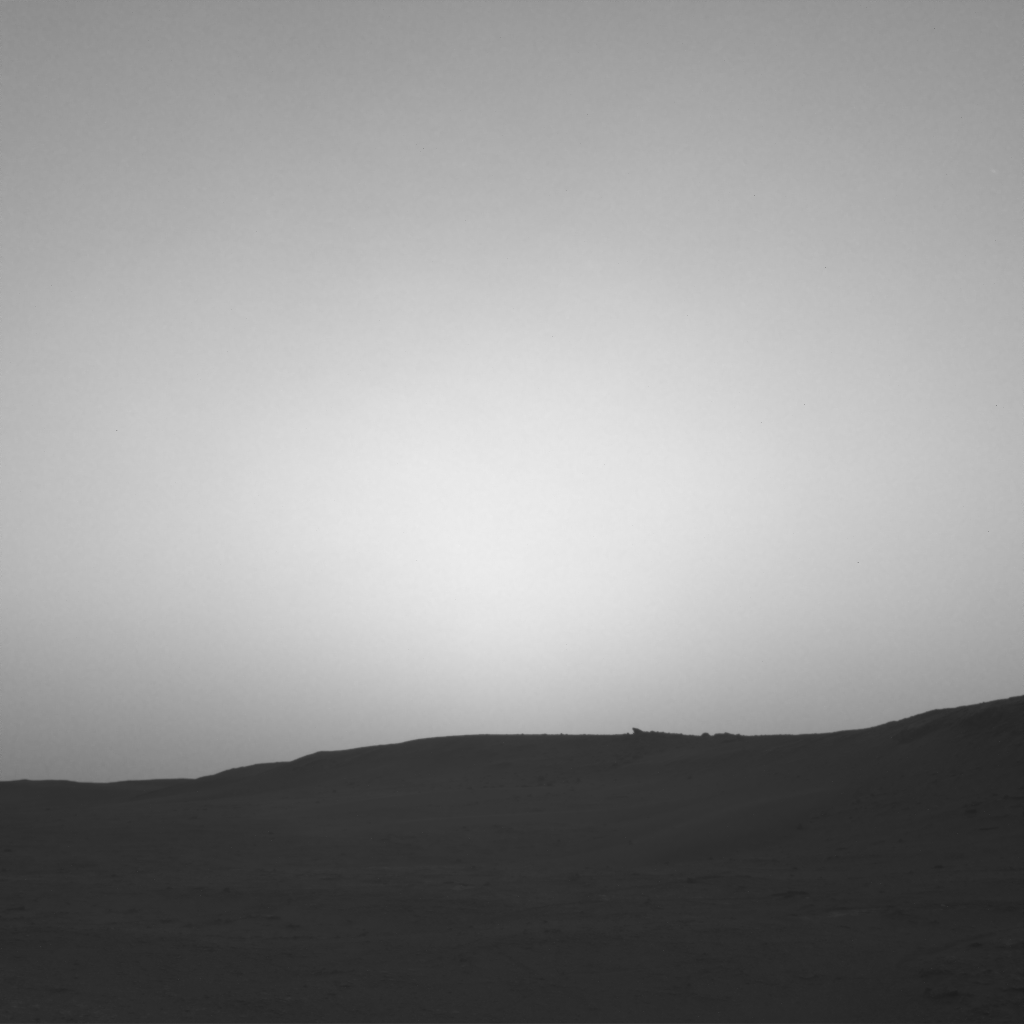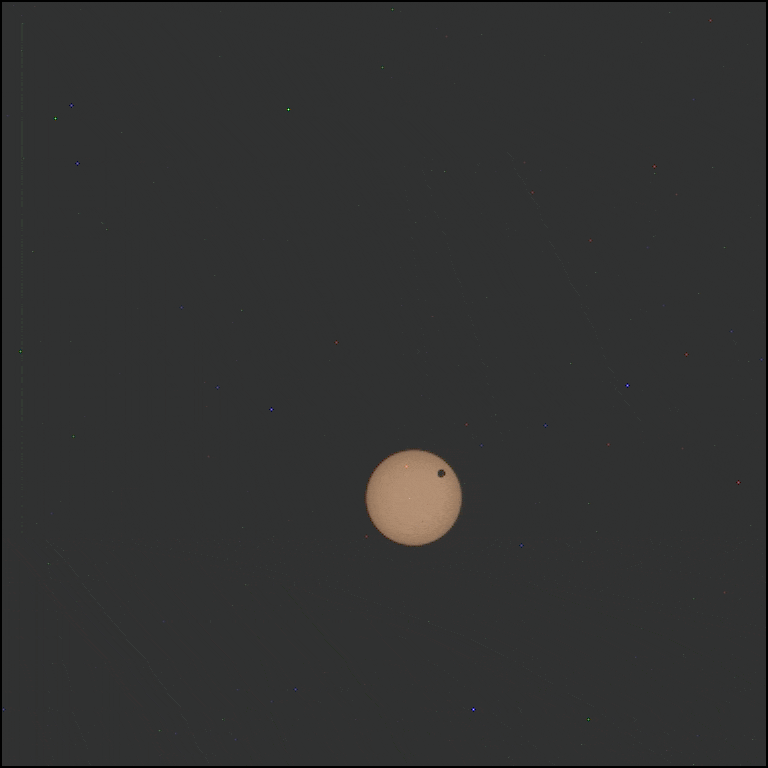What Does a Solar Eclipse on Mars Look Like? New, Breathtaking Images, Caught by NASA’s Perseverance Rover, Give Us an Idea
The robot recently observed each of the Red Planet’s moons passing across the sun in the Martian sky
:focal(360x317:361x318)/https://tf-cmsv2-smithsonianmag-media.s3.amazonaws.com/filer_public/66/6d/666d39d8-9986-4335-a9e5-c632eb926f42/zl7_1056_0760664095_632eby_n0501254zcam01538_1100lmj01_1200.jpg)
As sky watchers here in North America prepare for April’s total solar eclipse, NASA’s Perseverance rover on Mars has observed two breathtaking solar eclipses of its own from the Red Planet's Jezero Crater.
Earth-based observers are fortunate enough to witness our own moon eclipse the sun entirely, but Mars isn’t quite so lucky—its two moons, Phobos and Deimos, are too small to ever fully blot out the star’s light.
These less-than-complete eclipses, also known as transits, are still rather stunning, as recently released NASA images show. And these phenomena can provide valuable information to scientists looking to study the moons’ orbits or even Mars' surface.
Phobos casts a shadow
Mars’ larger moon, the potato-shaped rock called Phobos, eclipsed the sun on February 8. Perseverance captured a series of images depicting the moon’s transit, which took just about 30 seconds in total.
Oh, this?
— Paul Byrne (@ThePlanetaryGuy) February 9, 2024
Just a partial solar eclipse.
As seen on Mars.
Yesterday. pic.twitter.com/RIjJ3eLWDV
Phobos orbits Mars three times per day from a low distance of about 3,700 miles. (For comparison, Earth’s moon is 238,900 miles away.) The misshapen Phobos measures roughly 17 by 14 by 11 miles across.
During a Phobos-caused solar eclipse, sunlight intensity on Mars might drop by up to a quarter. Looking skyward, the Perseverance rover observed the event as a lumpy shadow moving across the sun.
Phobos is covered by a fine dust that doesn’t retain heat well—temperatures on the cold world range from “a pleasant winter day in Chicago” in the sunlight, to “more harsh than a night in Antarctica” in the dark, per NASA.
Slowly, Phobos is spiraling toward Mars—and the doomed moon is on a collision course with the planet. Every 100 years, Phobos moves about six feet closer to its host, meaning that it will either crash some 50 million years from now or break up into pieces that would form a ring around Mars.

Deimos transits across the sun
Perseverance also caught Deimos passing by the sun—but the tinier and more distant moon appears very different during its transit. On January 20, the diminutive satellite made its way across the star in the Martian sky over the course of several minutes.

A transit of Deimos also doesn’t look like a solar eclipse on Earth. Instead, it more closely resembles what terrestrial astronomers experience during a transit of Venus—an extremely rare event on Earth when our sister planet passes across the sun’s surface as a black dot.
Deimos is just 9 by 7 by 6.8 miles in size and is farther from Mars than Phobos, orbiting once every 30 hours at a distance of 14,500 miles.
The moon is gradually straying away from its host; in contrast to the dramatic collision that might lie in Phobos’ future, Deimos’ fate is to eventually escape the gravity of Mars and drift off into space.
Martian solar eclipse science
The first rovers to observe a Martian solar eclipse were Spirit and Opportunity in 2004. NASA’s Curiosity captured the first-ever video of a solar eclipse on Mars in 2019, and following suit, Perseverance filmed the highest-quality video of a Martian eclipse to date in 2022.
Solar eclipses on Mars are neat to watch, but NASA also uses these events to glean scientific information about the planet and its moons.

Before Spirit and Opportunity, astronomers were a lot less certain about the orbits of Mars’ natural satellites. When the rovers first tried to image Deimos passing in front of the sun, scientists realized the moon was 25 miles away from where they expected it would be.
“More observations over time help pin down the details of each orbit,” Mark Lemmon, a senior research scientist at the Space Science Institute, said in a statement in 2019. “Those orbits change all the time in response to the gravitational pull of Mars, Jupiter or even each Martian moon pulling on the other.”
In turn, understanding gravitational effects of the moons can hint at the composition of Mars itself.
“[Phobos’] tidal forces pull on the deep interior crust and mantle of the Red Planet,” NASA said in a 2022 statement. “Studying how much Phobos shifts over time reveals something about how resistant the crust and mantle are, and thus what kinds of materials they’re made of.”
The mysterious moons of Mars
Despite all the rovers have learned about the Martian moons, several questions remain. One glaring unknown is their origin—scientists aren’t sure where Phobos and Deimos came from.
Some experts have suggested the moons are asteroids that got captured by Mars’ gravity, while others proposed the lumpy, cratered rocks are pieces of the planet broken free by a collision long ago.
Researchers hope to have more clues about the moons’ origins in the coming years. Japan’s Martian Moon Exploration Mission is set to launch by 2026. Among other lofty science goals, the mission is intended to touch down on Phobos, collect a sample of its rock and tote it back to Earth for researchers to study.
“If the moons came from a giant impact on Mars, the resulting heat and energy should have removed most traces of water,” writes the Planetary Society. “If the moons are captured asteroids, they should have substantial water and organic materials like we find on similar small worlds.”
Currently, the sample return is set for 2031. But until then, astronomers can use Martian solar eclipses to learn more about the Red Planet—and revel in its beauty.